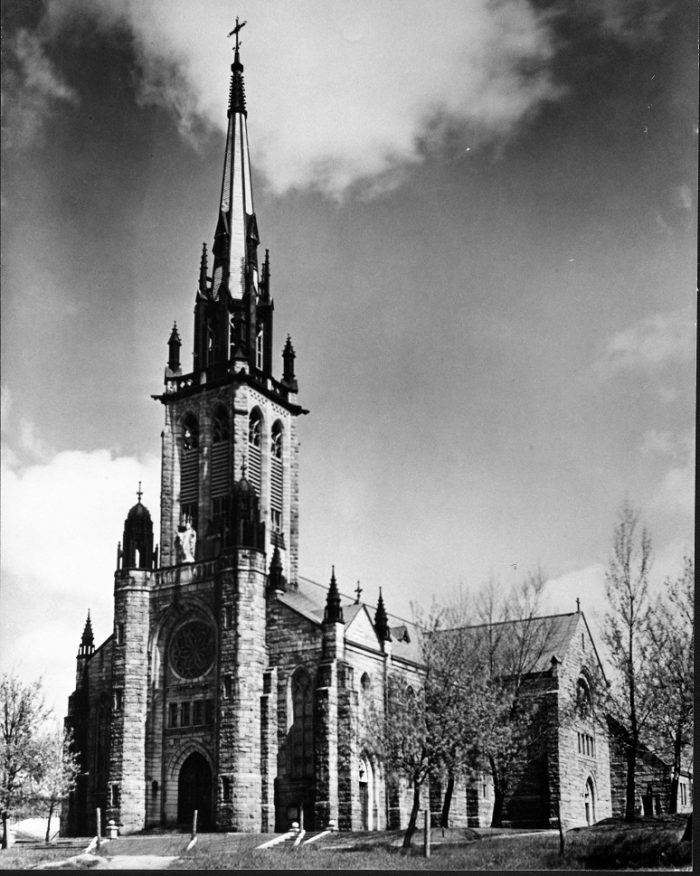

Partager
Have granite, will travel: Pieces of the Townships across the province
9 juillet , 2020
Written by Justin Gobeil, summer student
What does the St. Michel Cathedral in Sherbrooke, St. Joeseph’s Oratory in Montreal, the Bank of Canada in Ottawa, and the Musée National des Beaux-Art du Québec have in common? They are all made of the same stone; more precisely, the grey granite extracted from the mountains of St-Sébastien, a small village located in the Eastern Townships. The granite industry has been flourishing in the region for more than a century. The granite, itself, however, is quite a bit older than that. The Appalachians were formed 350 million years ago and are believed to have been as tall as Mount Everest. The granite was made when a bubble of magma got stuck under the crust, giving it time to slowly cool down (instead of erupting like a volcano). With time, the tall mountain eroded, exposing the solidified plutons of granite, and leaving a much smaller mountain, the Mont St-Sébastien, standing at 820 metres. The granite found there is grey, with slight notes of pink.
Everything started when the settlers found interesting grey rocks in their fields while they were clearing their fields to be able to plant crops. At first, the granite was thrown into pile just like all the other rocks. But soon enough, they realized that this stone was different than the others. During the winters, they started cutting and using the granite for practical uses. Quickly, techniques for stone cutting were developed, leading to the construction in 1889 of the St-Sébastien Church, the first to be made of St-Sébastien Grey Granite in the region. As the surrounding villages built their own churches with the grey granite, it started to be recognized in the region of Quebec as one of the prettiest and most resistant ever found in the province. It is with these qualities in mind that it was chosen for the construction of the Basilica St-Anne-de-Beaupré and St. Joseph’s Oratory, which popularized the use of the grey granite for other religious or institutional purposes.
However, when the demand for the St-Sébastien Grey decreased (partially due to changes in architectural trends), the local industry shifted from extraction to a transformation mindset: Instead of extracting blocks in the local quarries, blocks of granite from all around the world are brought in the factories in order to cut and polish them before sending them to the project locations. The invention of the diamond-toothed circular saw allowed the creation of new industries: the counter tops and building cladding. Throughout the years, some companies became leaders in their field, giving them the opportunity to provide the granite for important memorial projects, such as the 9/11 memorial in New York, the World War II memorial and the Martin Luther King Memorial in Washington, D.C., or closer to home, with the Fountain of Tourny, in front of the Parliament Building in Quebec City, or the National War Memorial in Ottawa. So next time that you are visiting one of those cities, pay attention, you might be looking at a piece of St-Sébastien and the Eastern Townships.
